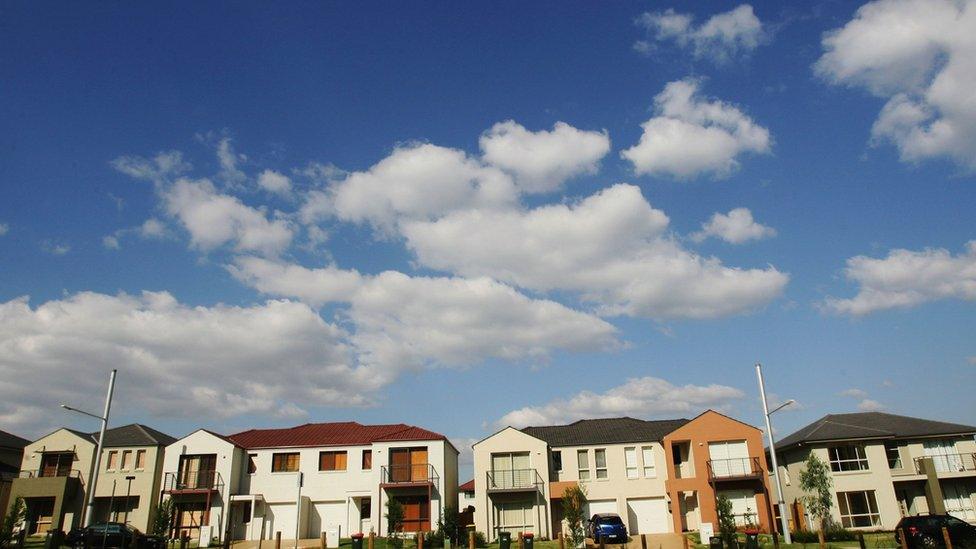The stockman who built an Australian cattle empire
- Published
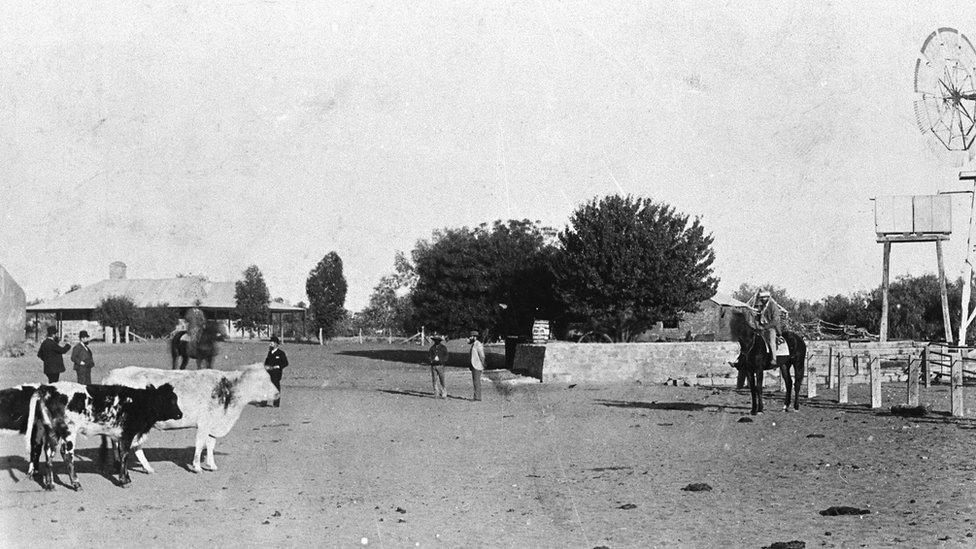
Steeped in Australian farming history, Sir Sidney Kidman's Anna Creek Station is part of the biggest private landholding in the world. The homestead and front yard is pictured here in 1896
Two Chinese conglomerates were the last standing in a bidding war to buy an extraordinarily large slice of Australia and its pastoral history in November.
The Kidman cattle empire is Australia's largest landholding, encompassing some of the driest and toughest country Australia has to offer.
Its story begins in the 1890s with Sir Sidney Kidman and his elder brother Sackville, who embarked on an ambitious venture that would transform agriculture in Australia.
The two brothers wanted to grow livestock in the country's dry centre, supported by Queensland's channel country rivers - the Georgina, the Diamantina and Cooper Creek.
The plan was that tropical rain from the north would deliver water needed for farming to flourish in this harsh environment.

Kidman properties spread across three states and the Northern Territory
The Kidmans' ambition, wrote biographer Jill Bowman, was to establish "a chain of stations that were almost drought-proof, places that when linked together would provide a substantial water supply".
Sackville Kidman died in 1899, but Sidney turned their dream into reality, founding the company S. Kidman & Co the same year.
Today the business encompasses 19 properties across the Northern Territory, South Australia, Queensland and Western Australia.
It owns 101,411 sq km (39,155 sq miles) of land in total - that's more than 1% of Australia's land mass and larger than Ireland. One of its properties is Anna Creek, the world's biggest cattle station, which stretches across 23,677 sq km.
The Kidman family has owned and managed the business for 116 years. But in April this year it was put on sale for a projected sum of A$325m ($232m; £152.3m).

Santa Gertrudis steers at Kidman's Tungali feedlot in South Australia
On Thursday however Australia's government decided to block the sale to foreign investors.
Selling so much of Australia's outback to foreigners would be against the national interest, Treasurer Scott Morrison said.
His reasoning? Part of property is inside the Woomera Prohibited Area (WPA), a military weapons testing range in South Australia.
The country's prime minister, Malcolm Turnbull, said the sale was blocked on national interest grounds and there was no discrimination against any particular buyer.

About Sir Sidney Kidman
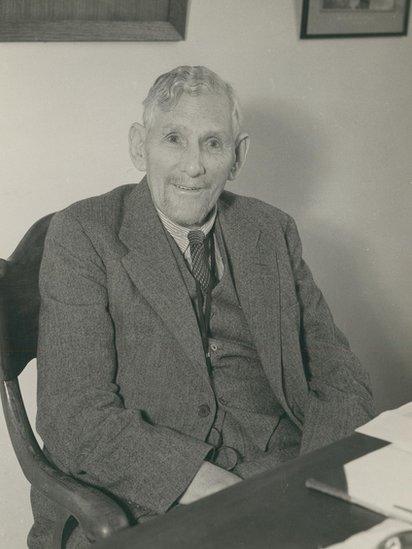
Sir Sidney Kidman was known as Australia's Cattle King
Born in Adelaide, South Australia on 9 May 1857, he started his working life at the age of 13 with his brothers as a drover and a stockhand in outback NSW.
His parcel of cattle properties was built up over 116 years - reaching a peak in 1904 when he had acquired some 300,000 sq km.
His business interests spanned sheep, railway, roads, ship building and reservoir construction.
He was knighted in 1921 for his contributions to Australia's World War One efforts, which included donations of land, money and fighter aeroplanes.
In 1932, a rodeo was organised in Adelaide to celebrate his 75th birthday. A stampede marred the event, which was attended by some 45,000 people. It is still regarded as the country's largest private birthday party.
Sir Sidney died on 3 September 1935.

Tomorrow's Kidman
Kidman & Co's business focus has long been on growing grass-fed beef for domestic and international markets.
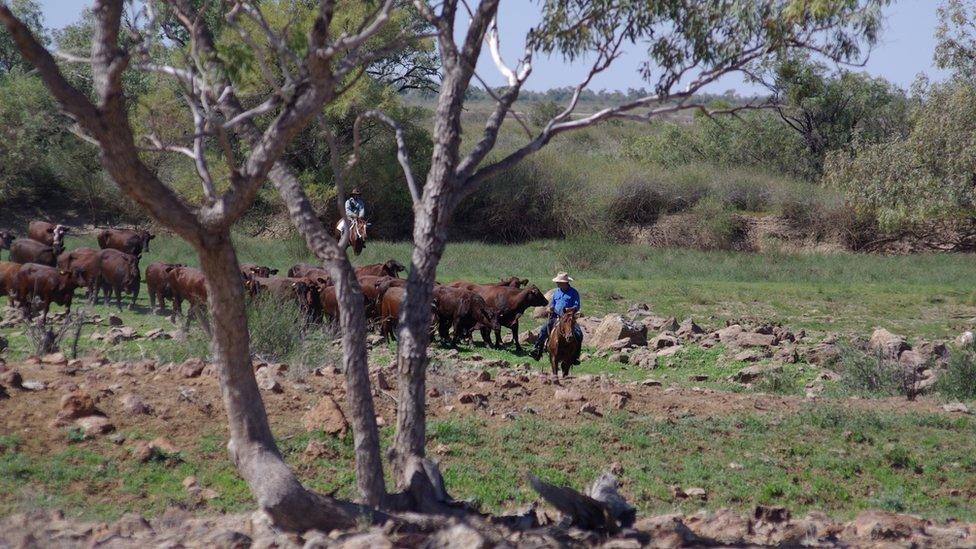
Mustering cattle at Kidman's Durham Down's property in Queensland
Headquartered in Adelaide, the firm says it supplies about 15,000 tonnes of beef carcass every year to markets around the world.
It is not clear if prospective buyers would maintain this focus, but there's no argument they would enter Australia's agricultural scene at a pivotal time.
As the mining boom subsides and the country looks elsewhere for economic growth, the business of farming the country's vast land for meat and other agricultural commodities has never been more important.
Mr Morrison indicated that the government may be willing to see Kidman broken for sale. So foreign investors may yet possess at least some of its vast cattle empire.
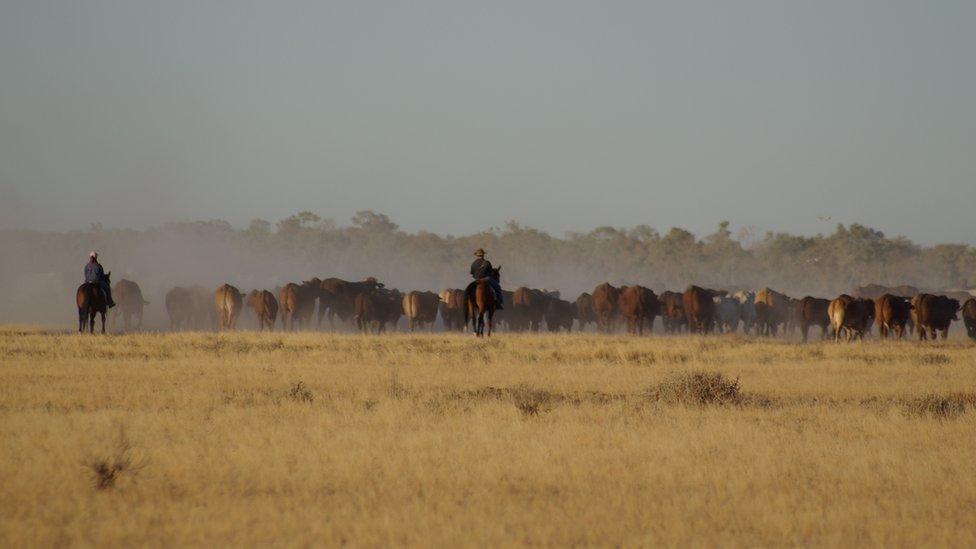
Grass fattened cattle in Kidman's Naryilco property in Queensland
Simon Talbot, head of the National Farmers Federation, told the BBC that opening up agricultural growth in northern Australian areas couldn't be done without foreign investment.
Even where large agricultural properties were foreign owned, the produce grown on them needed be transported using Australian infrastructure and jobs would be generated for Australian workers, he explained.
"People are starting to realise that as the mining boom is over, agriculture could become the next pillar of the Australian economy - but unfortunately we're not going to get there without significant investment," he said.
- Published29 October 2015

- Published2 July 2015
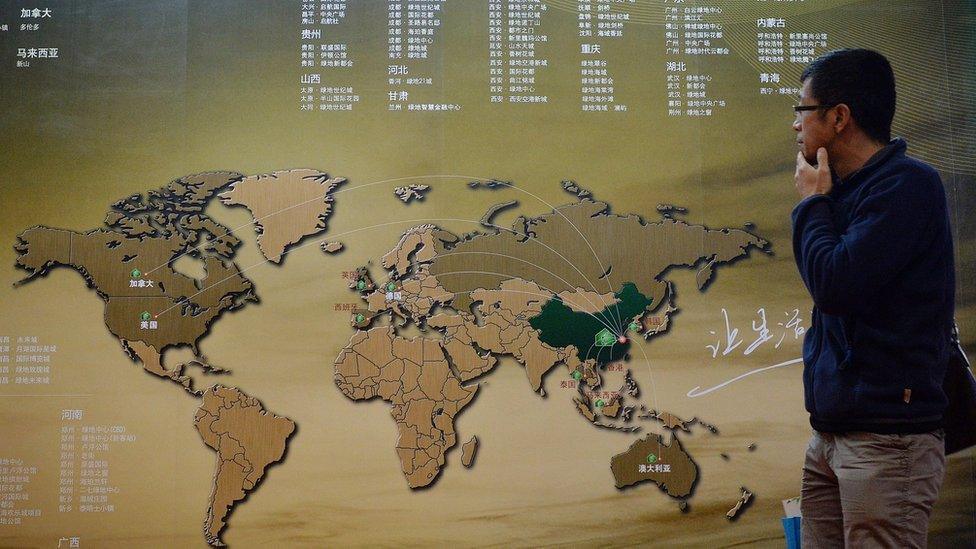
- Published1 March 2015
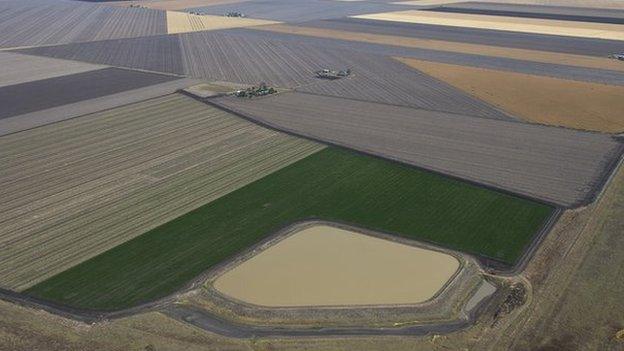
- Published17 November 2014
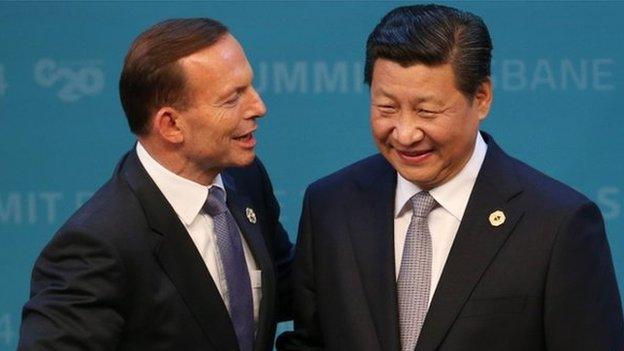
- Published8 June 2011

- Published23 September 2015
